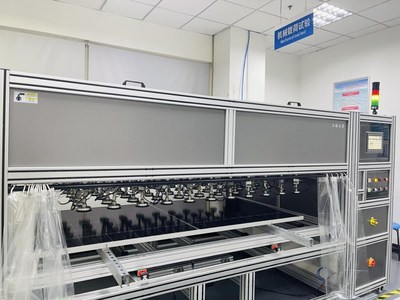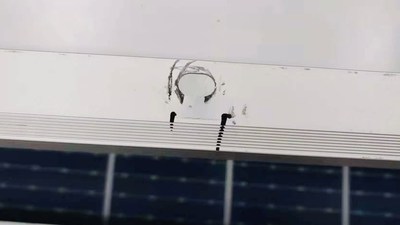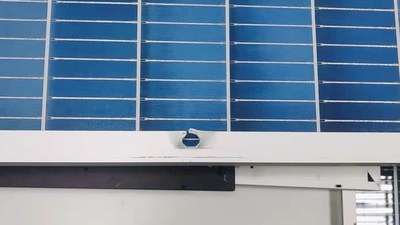Trina Solar recently conducted stringent dynamic mechanical load testing (DML) of its 210 Vertex 670W module in extreme environments based on the International Electrotechnical Commission (IEC) standards. The testing demonstrated that the 210 Vertex 670W module delivered better performance in terms of DML reliability compared to competitor’s single-glass 540W and dual-glass 535W modules.
In addition, the 210 mm Vertex 670W double-glass module has passed the 20,000 cycles, 20-fold extreme testing, fully validating the DML reliability of the module.

Based on the IEC TS 62782 standard for DML testing, the testing was carried out at the State Key Laboratory of PV Science and Technology. Generally, the standard DML testing consists of 1,000 cycles with each circle applying a positive loading (front side) and negative loading (rear side) of 1,000 Pa on the module tested at 3-7 cycles per minute. However, in extreme weather conditions such as heavy snow, gale and hail, the PV module may rupture due to high pressure from mechanical loading, which would lead to moisture entry, battery cracks, fatigue of welded joints and battery corrosion, eventually resulting in module and system failure. Thus, stricter testing is required.
This time, the extreme DML testing for Trina Solar's 210 Vertex 670W module is operated based on multi-fold standard DML. The 210 Vertex module delivered outstanding performance in the testing.
The testing included two rounds as follows:

In round 1, the multi-fold DML testing was conducted based on the standard load of ±1,000Pa while the appearance of the samples was observed every 500 cycles.
When the single glass module was secured in the crossbeam which is perpendicular to the long side by bolts, the 540W module showed cracks near the mounting holes after going through 3,000 DML cycles while the 210 mm Vertex 670W module continued functioning as normally at the end of 7,000 cycles.
When the dual-glass framed module was secured in the crossbeam which is parallel to the long side by bolts, the 540W module showed cracks after 2,000 DML cycles while the 210 Vertex 670W module continued operating normally after 3,500 cycles.
When the dual-glass framed module was secured in the crossbeam which is parallel to the long side by clamps, the appearance of the Vertex 670W module remained intact after 20,000 cycles!

Competitor's dual-glass 535W: Torn mounting holes
In round 2, the multi-fold DML testing was conducted based on the standard load of ±1,500Pa and the appearance of the samples was observed every 200 cycles.
When the dual-glass framed module was secured in the crossbeam which is parallel to the long side by bolts, the 535W module failed at the end of 200 DML cycles, with cracks occurring near two mounting holes, and another two mounting holes tearing completely, resulting in the screws dropping out; in contrast, the 210 Vertex module only has minor cracks around one mounting hole after 2,000 DML cycles.
When the dual-glass framed module was secured in the crossbeam which is parallel to the long side by clamps, the appearance of the Vertex 670W module remained intact even after 20,000 cycles!
The two rounds of comparative testing once again demonstrate the outstanding capability of the 210 Vertex module in resisting external mechanical stress.
Trina Solar, the world leading PV and smart energy total solution provider, has been committed to developing new and innovative products. With more than 20 years of process and technology expertise, the company has created the world's top modules with high efficiency and reliability, with worldwide shipments of the 210 Vertex module exceeding 16GW.
